NYC’s Forgotten ‘War on Christmas Trees’
Discover how an obscure holiday crackdown affects festive street vendors today!


It’s summertime which means it’s time to make maximum use of your bike or your Citibike membership. Here, we’ve put together four bike routes for cyclists who are looking to discover some history along with their ride. Included in this article are a leisurely ride from Prospect Park to Brighton Beach, jumping across the East River between Williamsburg, Roosevelt Island and Manhattan, a jam-packed historical route through downtown Manhattan, and a cultural jaunt through Upper Manhattan.
1. The Leisure Lover

Where to: Northern Prospect Park along the Ocean Parkway to Brighton Beach
What you need to know: Forming a straight line down the length of the borough, this ride, like the destinations that bound it, is smooth sailing from start to finish, with little or no incline along the tree-lined pathway.
Directions: (1) Start at Grand Army Plaza, enter Prospect Park and (2) merge onto West Drive, the park’s main bike loop. After a little over a mile, keep right at the fork on West Drive and exit the park. Continue around the Park Circle roundabout onto the (3) Brooklyn-Queens Greenway (4) Brighton Beach lies a few miles straight ahead.
Distance one-way: 7.7 miles
Highlights:
Brooklyn Public Library: Hugging Grand Army Plaza, and at the northern end of Prospect Park, looms the “open-book” face of Brooklyn’s Central Library. Pick up a beach read before starting your journey here and learn what the symbols mean on the epic doors of the library.

Prospect Park: Designed by the minds behind Central Park, Frederick Law Olmstead and Calvert Vaux, this lushly expansive patch of green calls to mind wilderness unlike any other New York City Park. The hills make biking through it a welcome challenge with ample downhill rewards. Try locating the spot where a replica of Mount Vernon once stood, one of the shortest lived buildings in NYC.

Prospect Park. Photo by gigi_nyc from the Untapped Cities Google Glass Scavenger Hunt
Washington Cemetery: Halfway through your trip stop for water and an altered view of the Verrazano Bridge before setting off on the rest of your journey.
Verrazano Bridge: It is possible to spot this double-decked suspension bridge from every one of the city’s five boroughs. Connecting the boroughs of Staten Island and Brooklyn, this centralized bridge’s role extends much farther by determined the heights of cruise and container ships across the globe. In order to reach the vital ports of New York and New Jersey, these boats must clear the Verrazano.
Brighton Beach: Although not New York’s premier vacation destination, Brighton Beach offers a uniquely counterintuitive “beach in the city” experience. The water is always refreshingly cool and clean and Coney Island is a nearby diversion. Make sure to check out Little Odessa, a micro neighborhood in Brighton Beach where you can experience the every day lives of the Russian diaspora in Little Odessa
Coney Island:
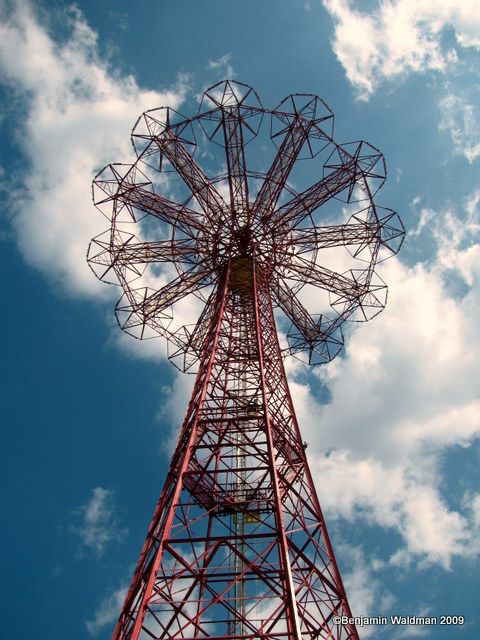
A whole new ride, the Thunderbolt, opens at Coney Island this week but also check out the older rides captured in vintage photography from the 1960s and the 1990s.
2. The Puddle Jumper
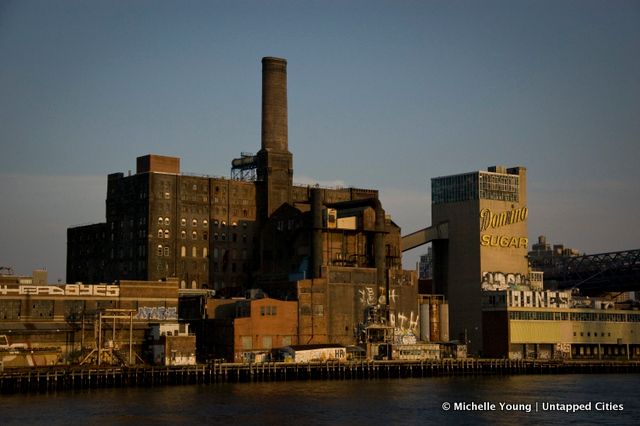
Where to: From the Williamsburg Bridge to McCarren Park Pool across the Pulaski Bridge through Long Island City to Roosevelt Island and back into Manhattan on the Roosevelt Island Tramway
What you need to know: Jump across various NYC waterways on this river-hopping, island-stopping route.
Directions: (1) Hop on the Williamsburg Bridge in Manhattan and once across make a right onto S. 4th Street and a left onto Roebling Street. Merge left onto Union Avenue and make a right on Driggs Avenue turning left toward Leonard Street. (2) Stop at McCarren Pool for a swim. Exit the park and head northwest on Manhattan Avenue, making a right on Eagle Street, and a left on McGuiness Boulevard merging straight onto the Pulaski Bridge. Once across, turn right on 50th Avenue, left on Jackson, and then right onto Vernon Boulevard. Make a left on 36th Avenue and onto the Roosevelt Island Bridge. (3) Make a right and head to the island’s tip to see the lighthouse. Then loop back around the island’s reverse side and run into the (4) Roosevelt Tramway (at 552 Main Street, Roosevelt Island) for an assist across the East River.
Distance one-way: 6.9 miles
Highlights:
Williamsburg Bridge: Historically, snubbed as an eyesore in contrast to the breathtaking Brooklyn Bridge, this grittily urban counterpart always offers an intriguing site in the way of graffiti. And the view of Manhattan and the soon-to-be re-developed Domino Sugar Factory from the top is unparalleled. The incline lasts a little while but is never too intense and pedestrian traffic is thankfully minimal.
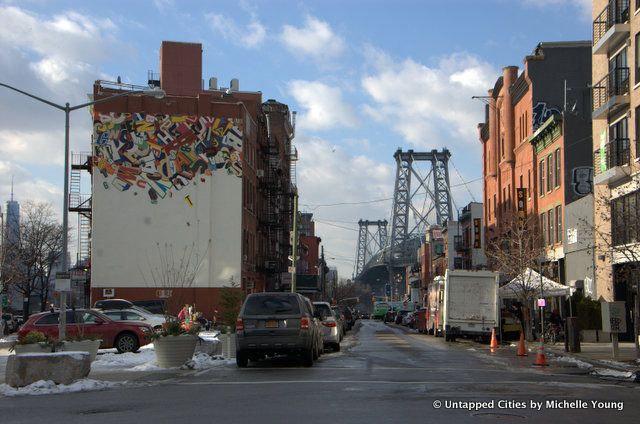
McCarren Park Pool: Cool off from the first leg of your trip in this recently re-opened public pool. Rules are enforced so don’t forget a lock, a towel, and a bathing suit. Water shoes are suggested.
Roosevelt (Blackwell) Island Lighthouse: Legend has it that a former inmate at the island’s since closed down New York Lunatic Asylum constructed the lighthouse in the 1870s. Stand at the island’s northern-most edge, take in the breeze, and watch the divided waters of the East River meet at the base of close-by Randall’s Island (the tidal straight on your right is known as Hell Gate). A wooden table and a small field of grass make this spot the perfect place for a well-deserved picnic.

Roosevelt Island Lighthouse. Check out more awesome NYC lighthouses here.
Roosevelt Island Tramway
: If all this puddle jumping has you tired and heights are your thing, hop on the Metrocard and bike-friendly tram and glide 250 feet over your final body of water.
FDR Four Freedoms Park and Smallpox Castle:
FDR Four Freedoms was designed by Louis I. Kahn in 1973 but wasn’t completed until 2012. It’s more a monument than park, but offers sweeping views of both Manhattan and Long Island City.

The neighboring Smallpox Castle is NYC’s only landmarked ruin and stabilization attempts are ongoing.

3. The History Buff
Where to: Trinity Church up to St. Paul’s Chapel and City Hall Park across the Brooklyn Bridge to the Brooklyn War Memorial and the Brooklyn Navy Yard
What you need to know: Zigzag throughout to the bottom of Manhattan and across the East River to Brooklyn on this unhurried route, stopping to observe some of New York City’s oldest and most historically paramount sites.
Directions: (1) Start at Trinity Church and Cemetery (74 Broadway). Head southwest along Broadway toward Wall Street, turn left onto Broad Street and continue onto Nassau Street. Make a left on Fulton Street. Returning to Broadway, you will find (2) St. Paul’s Chapel straight ahead at 209 Broadway. At this point you will be at the bottom of (3) City Hall Park. At the northern end lies the Tweed Courthouse. Up to this point no official bike routes are marked so proceed with extra caution. (4) From the park head southeast to Brooklyn Bridge Promenade and onto the bridge. Once across, continue on the same promenade until making a right onto Cadman Plaza East, (5) finding the Brooklyn War Memorial on the right. Loop back around onto Cadman Plaza, turning right onto Prospect Street. Make another right onto Jay Street, a left at Sands, a right on Navy and a last left on Flushing eventually ending up at (6) the Navy Yard.
Distance one-way: 4.2 miles
Highlights:
Trinity Church and Cemetery: One of the three cemeteries in Manhattan associated with Trinity Church and dating back to 1697, this non-denominational burial ground possesses the remains of Alexander Hamilton and John Jacob Astor among other notables, and remains the sole cemetery in Manhattan that still accepts new members today.

St. Paul’s Chapel: Built by the order of Queen Ann in 1766 and frequented by George Washington, this esteemed house of worship also boasts a standing as the city’s oldest remaining public use building, surviving the Great New York City fire during the Revolutionary War and the collapse of the once nearby Twin Towers and was inspired by British and Greek architecture.

Tweed Courthouse and City Hall Park: Don’t miss the site around which New York’s most acclaimed civic scandal erupted. In 1873, while the courthouse was still incomplete, this American Victorian style behemoth, hosted the trial of William S. Tweed during which he was found guilty for embezzlement of funds meant for the building’s construction.


City Hall Park
The Brooklyn Bridge: Opened in 1883 and constructed from limestone, granite and cement, this archetypal neo-Gothic city landmark was at one time the world’s longest suspension bridge and miraculously still stands today thanks to German architect, John Augustus Roebling’s reinforced truss system. Fortunately, it’s probably the easiest bridge to cross in terms of incline, but watch out for the plethora of rogue pedestrians.
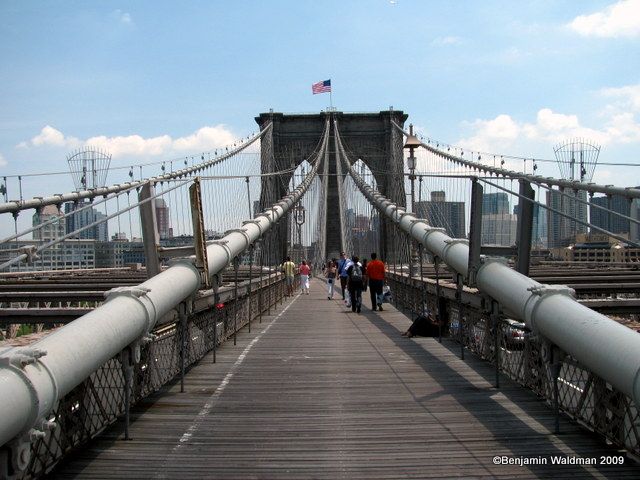
Brooklyn War Memorial: Erected in 1951, and designed by a congregation of over six architects, the monument memorializes Americans, male and female, who served in World War II. The two immense forms of a serviceman and a woman with a child that lie on either side of the structure are meant to denote victory and family.

Brooklyn Navy Yard: No longer an active navy yard, this industrial park, at one time launched the first U.S. steam warship and was a critical terminal during the Civil War in the 1860’s, dispatching essential supplies to the Union fleet. Sold to the city in 1967, the Yard works to foster industrial employment, environmental sustainability and to preserve the site’s history. The Navy Yard contains the abandoned Admiral’s Row and Building 92, which hosts various exhibitions throughout the year.
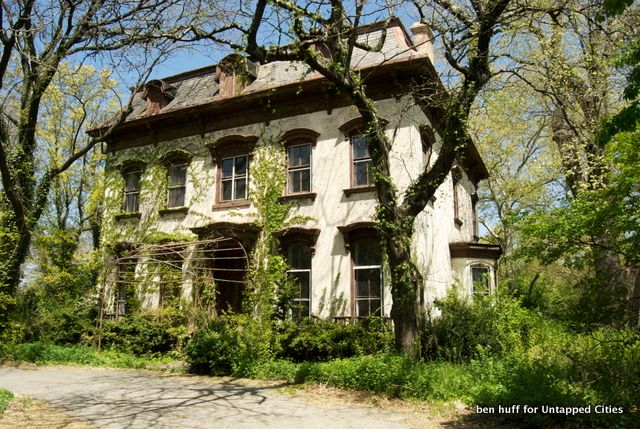
Admiral’s Row
4. The Upper Manhattan Culture Craver
Where to:
Carl Schurz Park to the Metropolitan Museum of Art to the Central Park Conservatory Garden through Central Park to The Cathedral of St. John the Divine.What you need to know: Spend and afternoon drifting among upper Manhattan’s most culturally rich museums and parks.
Directions: (1) After exploring Carl Schurz Park exit the park and make a right onto 83rd Street and take it straight to (2) the Met. (If you’re still itching for artifacts, on your way to the Conservancy along Fifth Avenue (aka Museum Mile) you will pass The Neue Galerie, The Guggenheim, The Jewish Museum and The Museum of the City of New York among others). Amble up through Central Park keeping close to Fifth Avenue. (3) At 105th Street and Fifth Avenue you will hit the Central Park Conservatory Gardens. Continue north through the park exiting at 110th Street. Make a left and head west. Make a right on Amsterdam Avenue. (4) The Cathedral of St. John the Divine will be on your right.
Distance one-way: 4 miles
Highlights:
Carl Schurz Park: One of the Manhattan’s best-kept secrets this often ignored park floats above the East River and contains two dog runs, a playground and Gracie Mansion–although the home is customarily used to house New York City’s current mayor, Bloomberg opted not to reside here throughout his three terms.
The Metropolitan Museum of Art: Whether a newbie or a seasoned veteran, this iconic city museum never disappoints. Wander aimlessly through countless galleries and discover the museum’s many secrets or see the latest exhibit.
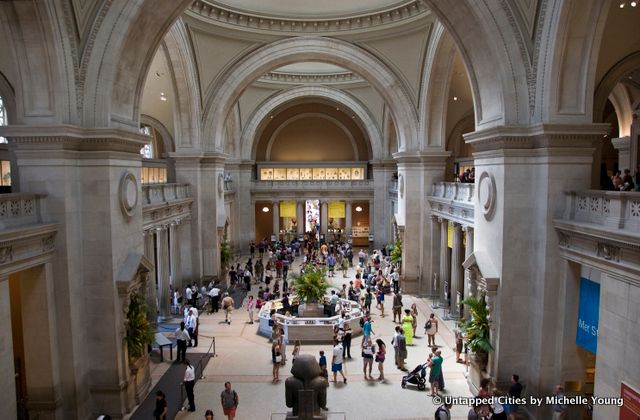
The Central Park Conservatory Garden: If a secret garden existed in New York, this would be it. Meticulously designed landscapes, mystical fountains, lily-padded ponds and paths that are so thick with foliage they may as well be tunnels decorate the otherworldly grounds. Pull out your best reading material, check out some of the top 10 secrets of the park, and get comfortable for a little while. Also, check out the garden’s fifth avenue gate which once adorned a Vanderbilt mansion.

St. John the Divine Cathedral: Roam among the massive granite columns of this still incomplete edifice that remains as one of the world’s largest Christian churches, despite its unfinished state. Before you go, read about ten secrets of the cathedral, including the three peacocks that live there.

What are some of your other favorite biking routes in New York City?
Subscribe to our newsletter